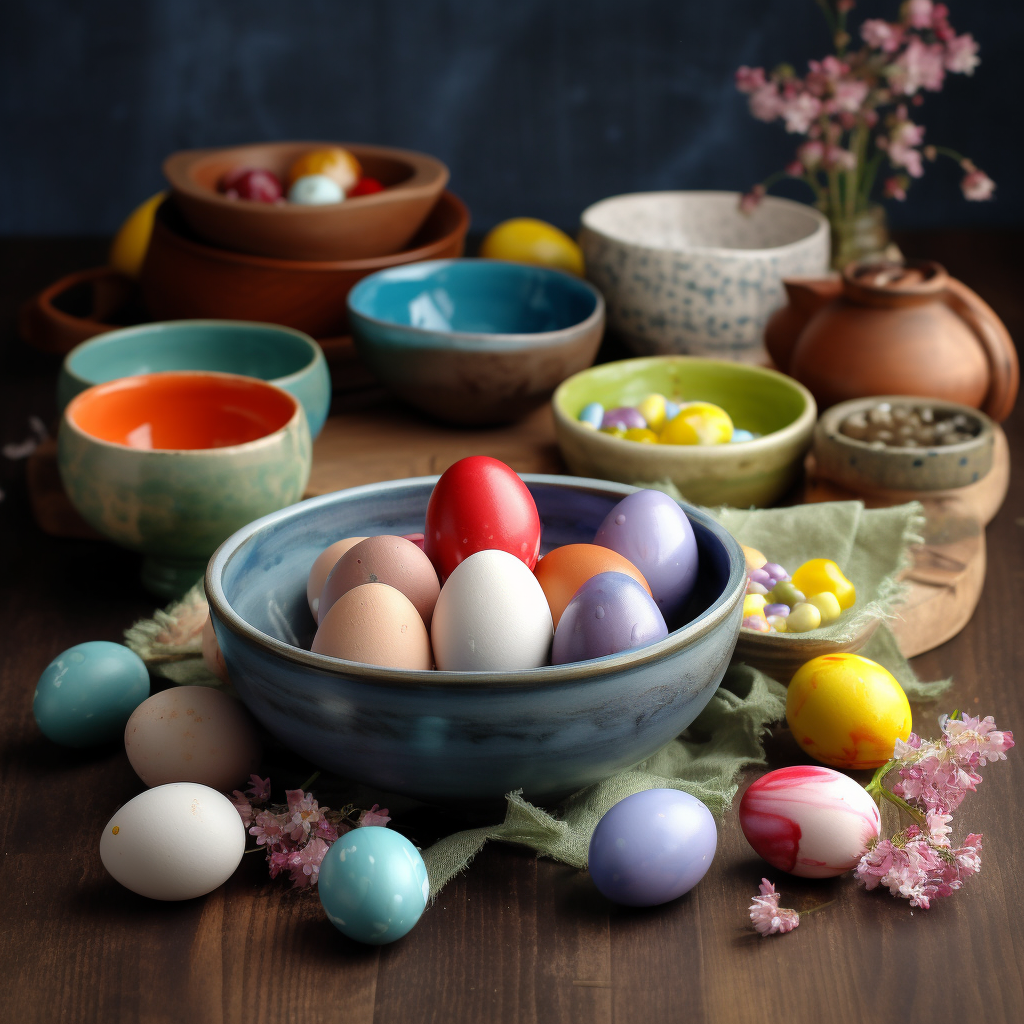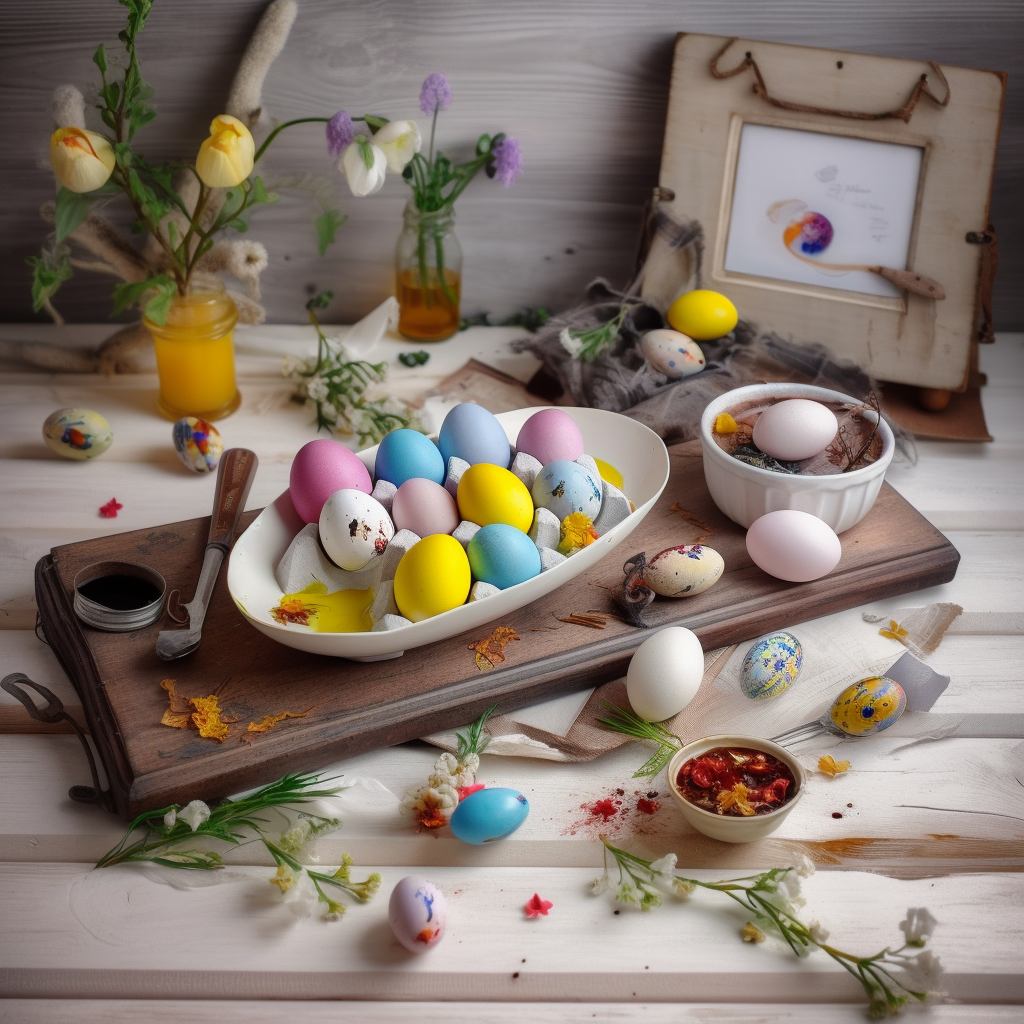Hey, Welcome to my little kitchen Beyond the Bayou Blog, where I share all things delicious and delightful. Today I will share about Easter Eggs Recipe. Easter is just around the corner, and I’m feeling nostalgic about the fun times I’ve had decorating eggs with my family in Easter along with many more Easters recipe like Easter Pie and Easter Salad. It’s a tradition that’s been passed down through generations, and each year, we get together to let our creativity shine. But this time, I wanted to try something different.
So, I delved into the world of natural egg dyeing. You won’t believe the stunning colors I achieved using everyday ingredients from my kitchen. Join me as I share my journey and some egg-citing recipes for a memorable Easter celebration. Let’s dive into it.
What is Easter Eggs?
Easter eggs are not just the colorful ones you hunt for during Easter. In the tech and entertainment world, Easter eggs are hidden surprises or messages tucked away within software, video games, movies, or even books. They’re like secret little treats for observant users or fans to discover. These Easter eggs can range from pop culture references and inside jokes to nods to the creators or developers. Finding an Easter egg can be exciting and adds an element of fun to exploring digital content. It’s like a hidden treasure waiting to be found, bringing delight and a sense of connection to those who discover them.
Overview: How to make Easter Eggs Recipe?

Making Easter eggs, whether for hunting or as a creative project, is a fun and enjoyable activity. First, gather your materials: eggs (either real or plastic), dye or paint, brushes, and any decorations you want to use, like stickers or markers. If you’re using real eggs, start by hard-boiling them and letting them cool. Then, prepare your dye according to the instructions on the package or mix your paint colors in small containers.
Now comes the fun part – dipping or painting your eggs. You can use a spoon to dip them in dye for a smooth, even color, or get creative with brushes to paint intricate designs. Let the eggs dry completely before adding any decorations. Once they’re dry, you can use stickers, markers, or even glitter to add personal touches to your eggs.
Let your creativity flow and make each egg unique! If you’re using plastic eggs, you can skip the dyeing step and jump straight into decorating. Once your Easter eggs are decorated to your liking, display them in a basket or hide them around your home or garden for an Easter egg hunt everyone will enjoy.
Colorful Easter Eggs Recipe
Equipment
- Pot or Saucepan
- Dye or food coloring
- Spoons
- Cups or bowls (for dyeing)
- Paper towels or drying rack
- Egg carton
Ingredients
- 8 ounces cream cheese
- ¼ pound margarine softened
- 2 teaspoons vanilla extract
- 2 pounds confectioners’ sugar
- 12 ounces peanut butter
- 12 ounces flaked coconut
- 4 cups semisweet chocolate chips
- 2 tablespoons shortening
Instructions
- Prepare Eggs: Boil and cool real eggs or gather plastic eggs for decorating.
- Set Up Dyeing Station: Fill cups with dye, add vinegar, and set out spoons.
- Dye Eggs: Submerge eggs in dye, leave for desired time, then remove and dry.
- Paint Designs: Use brushes to paint intricate designs or patterns on dry eggs.
- Decorate: Apply stickers, markers, or glitter to add personal touches to decorated eggs.
- Dry Completely: Let eggs dry thoroughly before displaying or hiding for Easter egg hunts.
- Display: Arrange decorated eggs in a basket or egg carton for a festive presentation.
- Enjoy: Share the joy of Easter by admiring, hunting, or gifting your beautifully decorated eggs.
Notes
- Use White Eggs: They take dye colors more vibrantly than brown eggs.
- Protect Surfaces: Cover work area with newspaper or paper towels to prevent staining.
- Experiment with Techniques: Try different dyeing methods like marbling or speckling for unique designs.
Nutrition
Time for the Tips!
- Prep Your Eggs: For best results, start with clean, dry eggs at room temperature to ensure the dye adheres evenly.
- Adjust Boiling Time: Achieve deeper colors by simmering eggs longer in the dye solution or using multiple layers of dye.
- Enhance Patterns: Wrap eggs with rubber bands or adhesive tape before dyeing to create interesting patterns or designs.
- Protect Your Workspace: Lay down newspaper or use a designated dyeing area to prevent staining surfaces.
- Use Vinegar: Add vinegar to the dye solution to help the color adhere better to the eggshells.
- Try Wax Resist: Apply melted wax to eggs before dyeing to create areas that resist the dye, revealing unique designs.
- Be Patient: Allow eggs to soak in the dye solution for at least 10-15 minutes to achieve desired color intensity..
Wanna Decorating Easter Eggs Without Dye!
Decorating Easter eggs without dye offers creative alternatives for vibrant designs. Natural options like onion skins, turmeric, or beet juice provide colorful hues without synthetic dyes. Boil eggs with these ingredients for unique patterns and shades. Alternatively, embrace artistic freedom with stickers, markers, or paint to craft personalized designs. These methods not only promote eco-friendliness but also engage creativity, making Easter egg decorating a fun and memorable activity for all ages. Explore these alternatives to traditional dyeing techniques for a unique and festive Easter celebration.
What to Serve with Easter Eggs Recipe?

What to do with Leftover?
- Deviled Eggs: Mash the boiled egg yolks with mayonnaise, mustard, and seasonings to make deviled eggs, a classic appetizer.
- Egg Salad Sandwiches: Chop the boiled eggs and mix them with mayonnaise, mustard, diced celery, and seasonings. Serve as a filling for sandwiches or wraps.
- Cobb Salad: Add chopped boiled eggs to a Cobb salad along with lettuce, tomatoes, avocado, bacon, and blue cheese.
- Potato Salad: Incorporate chopped boiled eggs into potato salad for added protein and flavor.
- Frittata or Quiche: Use leftover eggs to make a frittata or quiche by mixing them with vegetables, cheese, and herbs.
- Egg Curry: Make a flavorful egg curry by simmering boiled eggs in a spiced tomato-based sauce.
- Pickled Eggs: Preserve boiled eggs by pickling them in a vinegar-based brine infused with spices like mustard seeds, peppercorns, and bay leaves.
- Egg Fried Rice: Dice boiled eggs and stir-fry them with rice, vegetables, and soy sauce for a quick and tasty meal.
Frequently Asked Questions (FAQs)
Q: How long can decorated Easter eggs be kept?
A: Decorated Easter eggs can be kept in the refrigerator for up to one week if they are hard-boiled. If using plastic eggs for decoration, they can be kept for years if stored properly.
Q: Can I eat eggs that have been dyed with food coloring?
A: It’s generally safe to eat eggs that have been dyed with food coloring as long as the dye hasn’t cracked the shell, allowing it to seep into the egg. If using commercial food-grade dyes and following instructions carefully, the risk is minimal.
Q: How can I safely dispose of leftover Easter eggs?
A: If using real eggs, discard any eggs that have been at room temperature for more than two hours. You can dispose of them by crushing the shells and composting them, or by throwing them away in sealed bags to prevent attracting pests.

